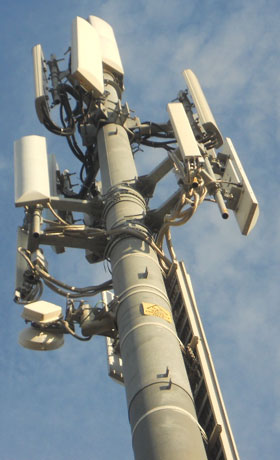 Telkom could win the race to be the first large telecommunications operator in SA to launch a commercial fourth-generation (4G) mobile network using long-term evolution (LTE) technology.
Telkom could win the race to be the first large telecommunications operator in SA to launch a commercial fourth-generation (4G) mobile network using long-term evolution (LTE) technology.
TechCentral has established exclusively that Telkom has been working closely with Korea’s KT Corp on plans to build a national, urban 4G network using LTE technology. Despite the collapse of the deal last week, the SA operator intends to forge on with plans to build the network, with commercial services possibly available to consumers as early as next year.
Telkom’s chief financial officer and acting CEO of its mobile unit, 8ta, Jacques Schindehütte, confirms that the company is planning the network and that the company believes its future lies more in mobile broadband services that in legacy cellular voice offerings.
Telkom will build the network using its existing allocations of spectrum in the 1,8GHz and 2,3GHz radio frequency spectrum bands. It will “refarm” some of the spectrum it has access to in the 1,8GHz band, which it currently uses to offer 2G voice services. It has access to 70MHz in the 2,3GHz band.
The company has already been running a limited LTE pilot, with plans to build towers across SA’s urban areas and “urban edges” next year. The build will probably start with the 1,8GHz band preferred by European operators; the 2,3GHz band is preferred by the Chinese.
If KT Corp’s experiences are anything to go by, real-world access speeds are expected to be between 20Mbit/s and 30Mbit/s, far faster than what is available from the third-generation (3G) mobile networks that are deployed in SA today. KT has 5m LTE clients in Korea, with most new net additional subscribers asking for 4G access.
Telkom CEO Nombulelo Moholi tells TechCentral that KT Corp’s experience in building an LTE network — it has 18 000 4G base stations in Korea — would have helped the local operator plan and deploy the LTE network. However, it will forge ahead with its plans, even if government doesn’t change its mind about not supporting the transaction as proposed. But it means the company won’t necessarily be able to tap crucial Korean expertise.
Moholi confirms that Telkom is looking at deploying both frequency-division duplexing (FDD) and time-division duplexing (TDD) versions of LTE.
Tim Parle, senior telecoms consultant at BMI-TechKnowledge, explains that FDD is typically used in deployments at 1,8GHz and TDD at 2,3GHz. In the former, spectrum is split into separate sub-bands, one for the uplink and the other for the downlink.
He says Telkom has an allocation of 12MHz plus 12MHz in the 1,8GHz band. Half of these bands could be retained for GSM services unless it wanted to direct more of its voice traffic over roaming partner MTN’s network.
The second half of the allocation could be used for FDD LTE, of which two portions of 5MHz each would be used for LTE with the remaining spectrum acting as a “guard band”.
Parle says the 2,3GHz band is standardised as a band for TDD LTE. This technology is more like two-way radio in that connections can only be made in one direction at a time. Though China favours 2,3GHz for LTE, European operators are predominantly using 1,8GHz, which may mean Telkom would be better off exploring 1,8GHz in the short term because of the availability of compatible equipment. — (c) 2012 NewsCentral Media
- Related story: Broadband, not voice, is 8ta’s future
- Image: Mike Cogh/Flickr




